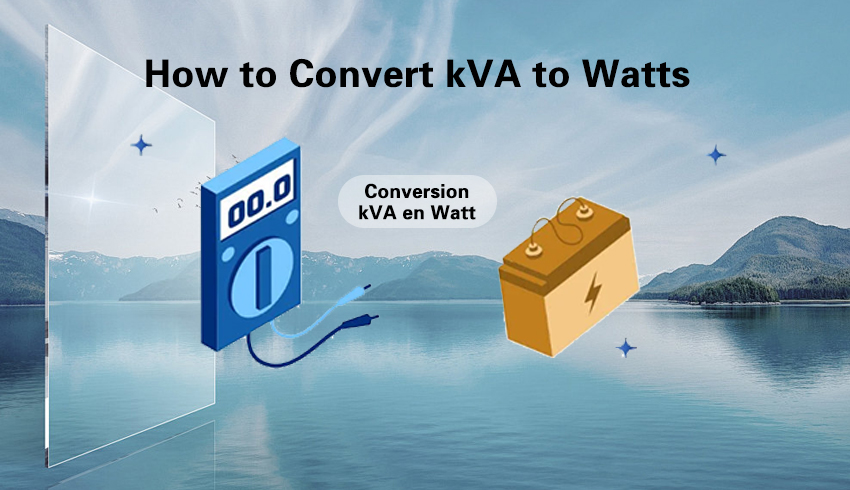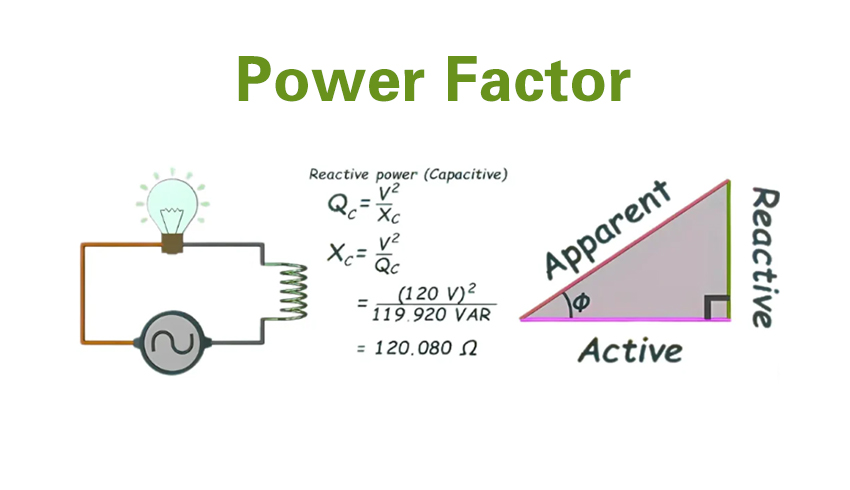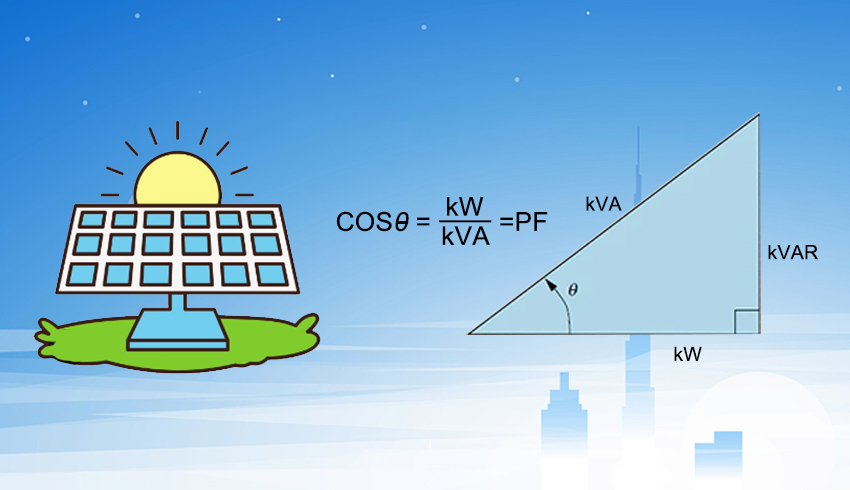This article is intended to provide you with a guide for convert kVA to watts . In this process, we will not only focus on the differences between kilovolt-ampere and watt, but also explore their specific applications in solar energy systems.

Kilovolt-ampere (kVA) is used to measure apparent power, while watt is a measure of true power. Having a clear understanding of the power of the watt allows us to more accurately grasp the actual power carrying capacity of the system, which is crucial for the in-depth understanding and efficient use of solar energy systems.
What is kVA?
KVA is a unit of measurement of power, generally used to describe the apparent power of equipment. It should be noted that kVA is equal to power only when the efficiency is 100%, and the power here covers both active and reactive power. kVA is calculated as follows:
KVA=1000 x voltage x current
Although the calculation of kVA is basically the same as the calculation of power, in practice they are not exactly the same!
What is the power factor?
Apparent power and kVA are closely related, which is the key power factor. Power factor is the ratio of effective power and apparent power in an electrical system, which can measure the efficiency of the electrical system. PF is generally used to represent the power factor.
If the equipment is not broken, the power factor is fixed, but once you start using it, it will decrease. The power factor ranges from 0 Zu 1. In der Theorie, the most ideal power factor for most electrical systems is 1, but in practice, most are between 0 Und 1, und allgemein, the common power factor is about 0.9. Different circuit systems, the specific power factor is how much, have to rely on professional testing to know.

The principle of power factor is to calculate the current and voltage (VA) for a period of time, and then find an average value. When the current and voltage are the same, compare the calculated power in this case with the average. Because current and voltage will not always be the same in practice, the power factor will be between 0 Und 1.
What is a Watt?
Watt is a unit of power used to describe the amount of energy released by a current over a specified period of time, das ist, the rate at which the current does work in a circuit. Watt is the most commonly used and the simplest unit in electrical equipment, used to assess the size of the power consumption of each electrical equipment, usually watt is used to describe the power consumption of smaller equipment, for large power stations generally use kilowatt-hours, 1000w=1kw.
Kilovolt-ampere of solar power system
kVA measures the apparent power in an electrical system. This is not to be confused with kilowatts, which measure the true power of an electrical system.
Some units will express the amount of electricity they contain in kilovolt-ampere (kVA), but it is more useful to know power in Watts, as this is a measure of true power.
Keep in mind that converting kva to watts is just one of many formulas you need to know in order to properly maintain your solar panel system. Be sure to check out our mah to Watt calculator for another important conversion.
How to convert kVA to watts?
The conversion between kilovolt-ampere (KVA) and watt is often used in electrical systems, if the calculation of KVA and watt , the first need to convert kilovolt-ampere (KVA) to volt-ampere (VA), das ist: 1KVA = 1000VA

What about the volt ampere? It is the current (in Ampere, abbreviated as amps, the letter is I) multiplied by the voltage (in Volt, abbreviated as volts, the letter U), Die Formel ist:
VA = I (EIN) x U (v)
The power is calculated as follows:
P(w)= I(A)x U(V)x PF
From the above equations, we can simply get the relationship between voltamperes and watts.
P (W) = VA x PF, because 1kw = 1000w, it follows:
kw=KVA×PF
Zusammenfassen, the KVA and watts are calculated as follows:
P (W) = KVA x 1000 x PF
To give you an example, if there is an electrical equipment is 6KVA, the power factor is 0.8, converted into wattage is calculated like this:
P (W) = 6KVA x 0.8 X 1000 = 4800W
Table of kVA to Watts Conversions
Below is a table showing the conversion of various kVA values to watts sorted from smallest to largest, assuming a power factor of 0.8.
| kVA | Leistungsfaktor (PF) | Watts (W) |
| 1.10 | 0.80 | 880.00 |
| 2.00 | 0.80 | 1600.00 |
| 3.00 | 0.80 | 2400.00 |
| 10.00 | 0.80 | 8000.00 |
| 15.00 | 0.80 | 12000.00 |
| 20.00 | 0.80 | 16000.00 |
| 100.00 | 0.80 | 80000.00 |
| 200.00 | 0.80 | 160000.00 |
| 1000.00 | 0.80 | 800000.00 |
| 1500.00 | 0.80 | 1200000.00 |
| 2000.00 | 0.80 | 1600000.00 |
| 10000.00 | 0.80 | 8000000.00 |
Konvertieren 1 KVA to Watts
To convert 1 kVA to watts at a power factor of 0.8:
Watts=1×0.8×1000=800 W
Konvertieren 2 KVA to Watts
To convert 2 kVA to watts at a power factor of 0.8:
Watts=2×0.8×1000=1600 W
Konvertieren 3 KVA to Watts
To convert 3 kVA to watts at a power factor of 0.8:
Watts=3×0.8×1000=2400 W
Why do kVA and power factors exist?
In the AC circuit, the size and direction of current and voltage are constantly changing, so the direction of current and voltage is not always the same, they are independent of each other, when the voltage is at the highest peak, when the current is at the lowest value, the current can not catch up with the voltage.
Calculate ac circuit power, need to calculate the power of each moment: P = U (v) X (W) ICH (EIN) and then take the average of the time, for the cycle power calculation of effective voltage and current in circuit (VA) and the ratio of watt, for the power factor (PF).
Abschluss
Understanding the relationship between kilovolts per ampere and watts of AC can help you choose the best solar system for your home, RV or office. If you’re still confused, feel free to contact us at Gycx Solar, our mission is to make solar simple and we’ll be happy to help answer any questions you may have.
